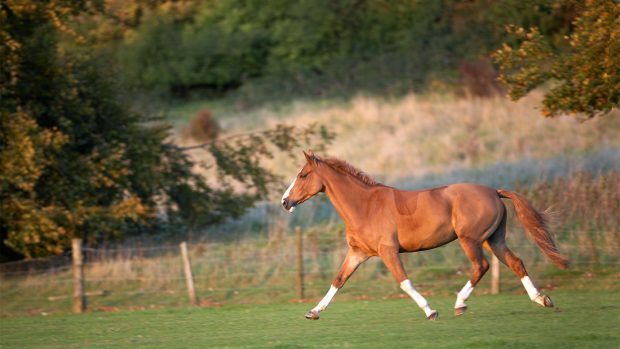Lameness is probably the most common reason why horses are not able to work or fulfil their potential, and why horse owners seek veterinary advice.
No matter what the initial cause, any minor injury can lead to osteoarthritis (OA). OA is a major problem in horses, as well as in man and other animals, largely because, once the disease has reached the point where it is obvious to the horse and its owner, the damage is irreversible.
Current medical and surgical techniques do not allow a joint with OA to return to normal. Joints are fairly complex and are made up of a number of structures such as bones, ligaments and tendons, and the joint cartilage. Cartilage is vital to the function of the joint, as it provides the unique coating that allows one bone to move over another without causing pain.
In OA, this joint cartilage becomes damaged and lost. The body is then unable to repair or replace it, so the joint will never be entirely normal. It may be possible to manage a horse with some degree of OA to allow him to continue working using a variety of drugs, physiotherapy and structured training routines.
What is currently available?
Probably the most popular treatment for OA is a class of anti-inflammatory drugs called non-steroidal anti-inflammatories (NSAIDs). Bute is the commonly prescribed medication.
NSAIDs are extremely useful as painkillers and frequently make lame horses more comfortable. But they act at the level of relieving the signs of OA, rather than curing the underlying disease process in the joint.
The other main class of medication used is corticosteroids. These are extremely powerful anti-inflammatories that produce profound effects inside the joints, decreasing the amount of internal damage. They are almost invariably given as injections directly into the joint and can be extremely useful in managing lame horses.
But steroids do have their downside and, in some instances, can cause longer-term problems, despite being beneficial in the short-term. In rare cases, they have been associated with side effects such as laminitis and joint infection.
While most vets use corticosteroids regularly to treat OA, they accept that this is not always ideal. Other medical treatments that have been available for a long time include hyaluronan and polysulphated glycosaminoglycans (Adequan). These are injected into the bloodstream, joint or muscle. Both have some effect on the damaged joint and can help improve the articular cartilage.
There is also a multitude of nutritional supplements, not licensed as medical treatments, which may have beneficial effects on joint health.
This formed part of a veterinary feature about osteoarthritis in Horse & Hound (5 April, ’07)




